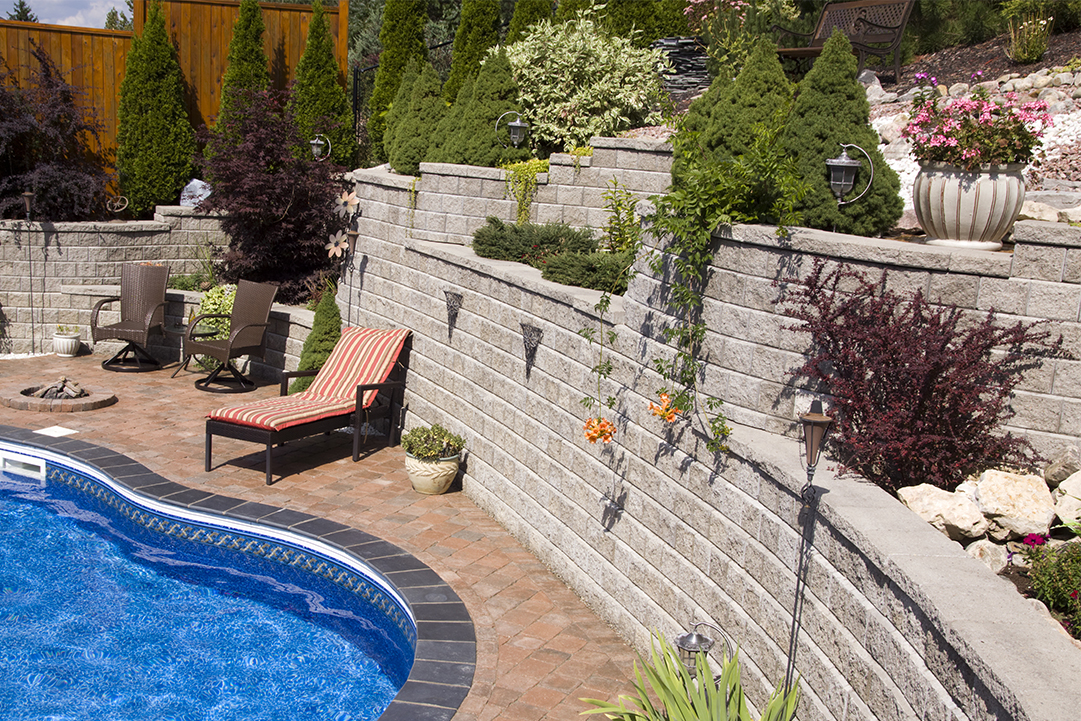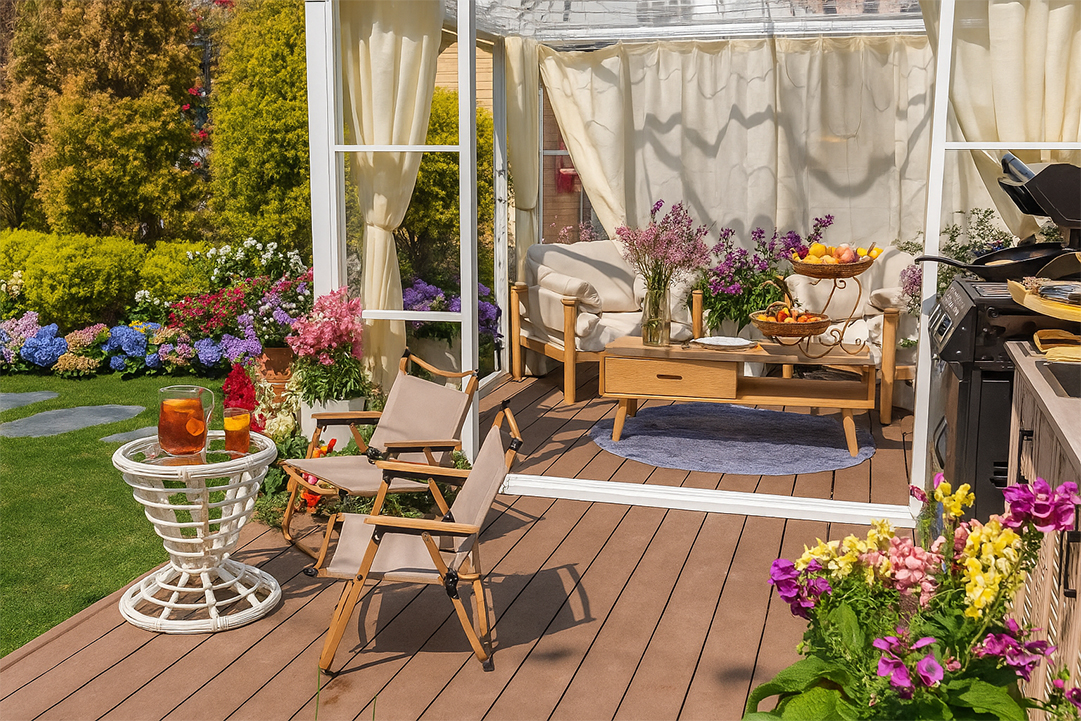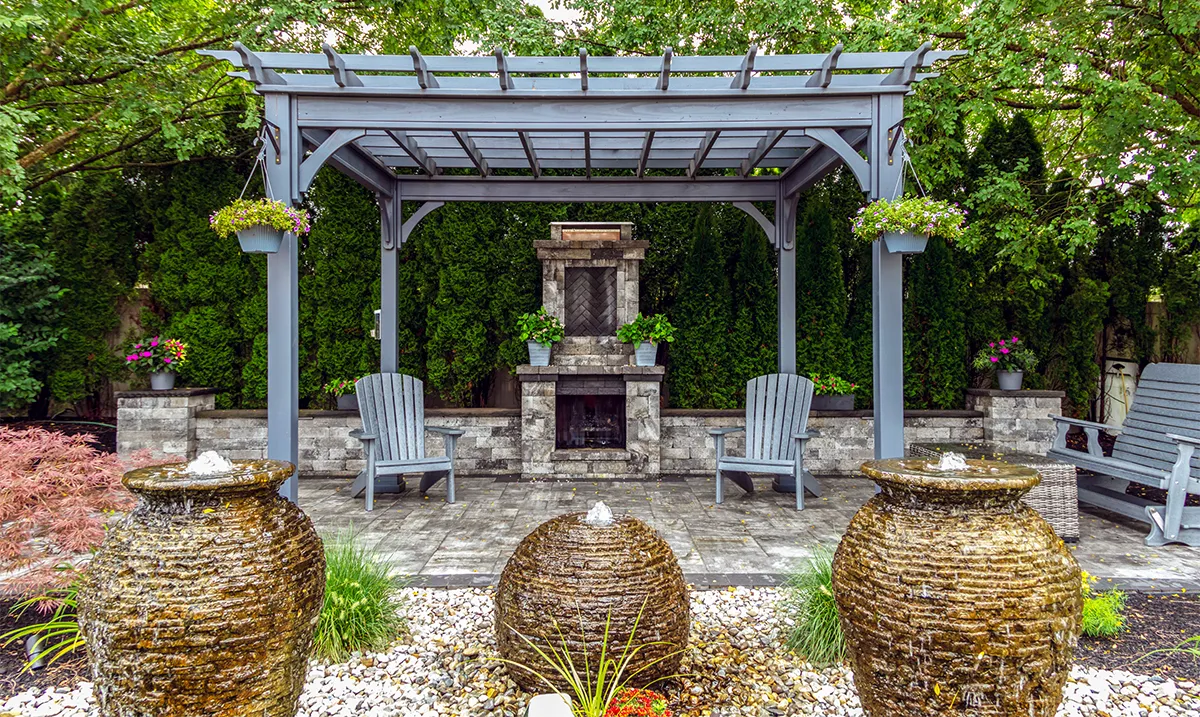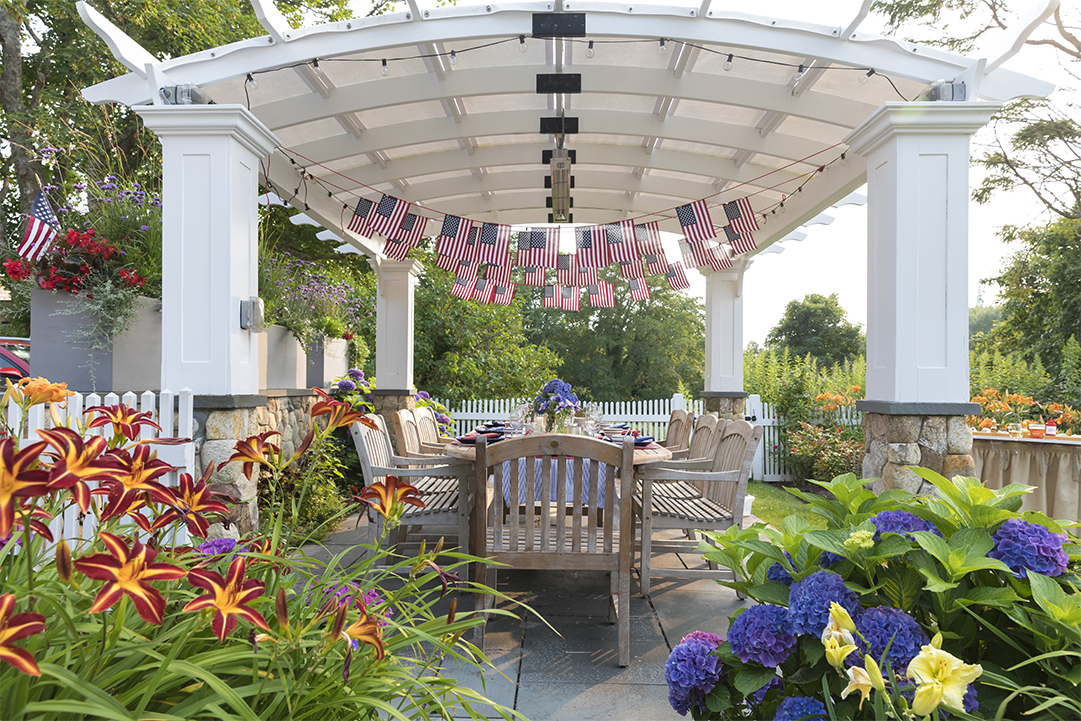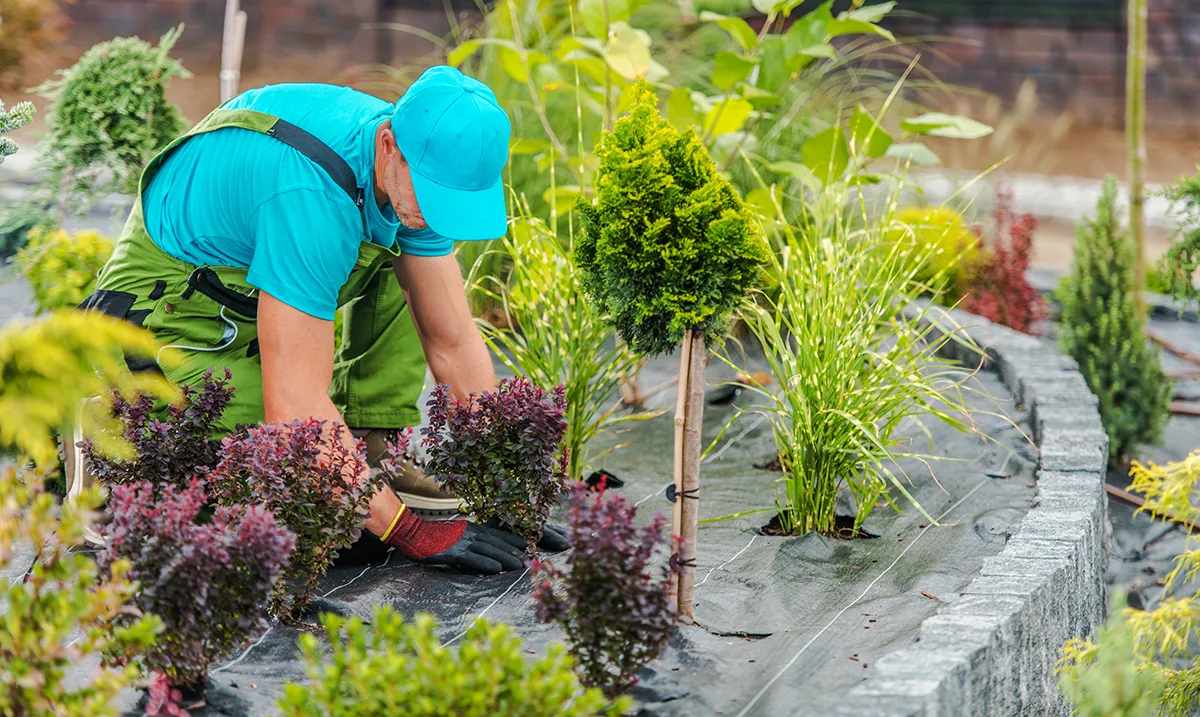Retaining walls center on structural benefits, but they also elevate landscaping aesthetics by transforming backyards into outdoor living spaces. A retaining wall’s ability to artfully shape terrain opens up an entire discipline of landscape design that New Jersey homeowners can explore with High Tech Landscapes, named one of the top landscaping companies in the entire U.S. by both Landscape Management and Lawn & Landscape.
Having a nationally recognized landscape architect like High Tech right in your backyard is a huge advantage, especially when it comes to finding professional stone work that’s thoughtfully engineered to integrate with your landscape. Here are a few of the most popular use cases for building a retaining wall:
1. Seating
Retaining walls perfectly merge form with function when they’re designed to incorporate seating. Your guests probably won’t even realize that your retaining wall serves other purposes; they’ll see it simply as a beautifully convenient place to sit and enjoy the natural beauty of your backyard.
When designing a retaining wall to double as a bench, it’s important to consider comfort. The wall’s height, for instance, will typically be between 18 and 22 inches to replicate standard chair height. If the wall is too short or too tall, you’ll lose that comfort factor.
Incorporating seating into retaining walls around communal areas like fire pits or outdoor kitchens creates a natural gathering space. It’s also an efficient use of square footage as it reduces the need for additional furniture and keeps your yard uncluttered.
2. Privacy
A retaining wall can be a surprising and subtle way to give a raised patio an extra sense of privacy, particularly in urban or suburban settings where houses are in close proximity. In this case, the design of your retaining wall should take into consideration not only the height and placement but also the materials used. Different materials can offer varying degrees of sound insulation and seclusion, contributing to the overall ambiance of your outdoor space. Solid concrete, for example, naturally provides effective sound blocking. Stone and brick, on the other hand, might not perform as uniformly as concrete if there are small gaps.
In addition to providing privacy from neighbors, a well-placed wall can contribute to a more comfortable seating area by blocking undesirable winds or harsh sunlight.
3. Erosion Control
Erosion control is perhaps the standout function of retaining walls, making them crucial for sloped gardens where soil stability is at risk. The effectiveness of a retaining wall in erosion control hinges on its construction quality, particularly regarding drainage. Properly designed walls have materials like interlocking concrete blocks for their balance of strength and water permeability, preventing the buildup of hydrostatic pressure that can compromise wall stability. Features like weep holes and drainage aggregates are essential in facilitating water flow and maintaining the wall’s durability over time.
On the aesthetic side of erosion control, a retaining wall can introduce terraced levels to your garden. This sophisticated architectural feature allows for diverse plantings at each level to create a visually engaging garden that draws and delights the eye.
4. Garden Design
Using retaining walls to create raised garden beds brings both visual and practical benefits to your landscape. Clear demarcation makes your garden a vibrant showcase of natural beauty and thoughtful design. Meanwhile, the elevated tiers offer improved soil conditions and drainage. Incorporating built-in irrigation systems within raised beds can help enhance plant health and growth by delivering water directly to the roots, while minimizing the amount of water wasted.
A retaining wall can also effectively create a microclimate by modifying sun and wind exposure. For instance, a south-facing wall can harness direct sunlight throughout the day to warm the soil for heat-loving plants. Similarly, walls can act as windbreakers for delicate plants. A little bit of strategy goes a long way toward taking your garden up a notch (literally and figuratively)!
5. Architectural Design
Retaining walls contribute significantly to the architectural interest of a landscape. They introduce texture, form, and rhythm in tune with the exterior of your home. The choice of materials, from natural stone to contemporary concrete, can complement your home’s style while creating a cohesive and visually captivating landscape.
Integrating lighting along a retaining wall is yet another way to add both visual appeal and practical functionality to your outdoor space. The key benefit, of course, is extending your enjoyment of your outdoor space into the evening. The lighting can also be creatively designed to spotlight surrounding plants and features for a lovely nighttime garden scene.
A True Cornerstone of Your Landscape
There are so many ways that a retaining wall can enhance your landscape all around. From cozy seating areas to private enclaves, retaining walls add new dimensions to outdoor living. Exploring the idea of building a retaining wall for your outdoor space? See how High Tech can help and contact us today to speak with one of our masonry experts about scheduling a complimentary site survey.
